television
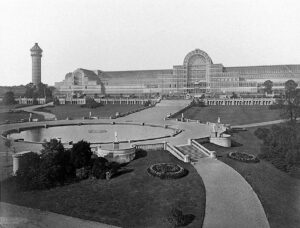
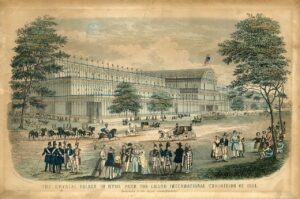 Every time there is a great event like the Olympics, the World’s Fair, or in this case, the Great Exhibition, a stunning new building or structure is built to house the event. The Crystal Palace was originally located in Hyde Park, London, England. It was a cast iron and plate glass structure, built to house the Great Exhibition of 1851. The Great Exhibition took place from May 1 to October 15, 1851, with more than 14,000 exhibitors from around the world gathered in its 990,000 square feet exhibition hall to display their own examples of the latest technology they had developed in the Industrial Revolution. The Crystal Palace was designed by Joseph Paxton. It was 1,851 feet long, with an interior height of 128 feet. It was three times the size of Saint Paul’s Cathedral. Some say that the name of the building came from a piece penned by the playwright Douglas Jerrold, who in July 1850 wrote in the satirical magazine Punch about the forthcoming Great Exhibition, referring to a “palace of very crystal.”
Every time there is a great event like the Olympics, the World’s Fair, or in this case, the Great Exhibition, a stunning new building or structure is built to house the event. The Crystal Palace was originally located in Hyde Park, London, England. It was a cast iron and plate glass structure, built to house the Great Exhibition of 1851. The Great Exhibition took place from May 1 to October 15, 1851, with more than 14,000 exhibitors from around the world gathered in its 990,000 square feet exhibition hall to display their own examples of the latest technology they had developed in the Industrial Revolution. The Crystal Palace was designed by Joseph Paxton. It was 1,851 feet long, with an interior height of 128 feet. It was three times the size of Saint Paul’s Cathedral. Some say that the name of the building came from a piece penned by the playwright Douglas Jerrold, who in July 1850 wrote in the satirical magazine Punch about the forthcoming Great Exhibition, referring to a “palace of very crystal.”
The design called for 60,000 panes of glass to adorn the building. On average, a team of 80 men could fix more than 18,000 panes of sheet glass in a week. These were manufactured by the Chance Brothers. The building was finished in 39 weeks. The Crystal Palace boasted the greatest area of glass ever seen in a building. Visitors were shocked and astonished by all the clear walls and ceilings that did not require interior lights. The interior of the building had full grown trees!! The full-size elm trees that had been growing in the park were simply enclosed within the central exhibition hall near the 27-foot-tall Crystal Fountain. While very nice looking, the trees caused a problem with sparrows becoming a nuisance, and of course, shooting was out of the question inside a glass building. When Queen Victoria mentioned this problem to the Duke of Wellington, he offered the solution, “Sparrowhawks, Ma’am.” Now to me, that is incredulous, because you would simply be replacing on kind of bird with another, and then there was the added problem of bird violence. I don’t think the visitors would be very thrilled about the fighting birds or dropping bodies.
Incredibly, the Palace was relocated after the Great Exhibition, to an open area of South London known as Penge Place which had been excised from Penge Common. The building was rebuilt at the top of Penge Peak next to Sydenham Hill, which is an affluent suburb. The Crystal Palace stood in that location from June 1854 until a fire destroyed it in November 1936. After the fire, the suburb was renamed Crystal Palace after the landmark. In addition, a park was placed in the area and named Crystal Palace Park. It surrounds the site, and is home of the Crystal Palace National Sports Centre, which was previously a football stadium that hosted the FA Cup Final between 1895 and 1914. Crystal Palace Football Club were founded at the site and played at the Cup Final venue in their early years. The site still contains Benjamin Waterhouse Hawkins’s Crystal Palace Dinosaurs which date back to 1854.
In the 1920s, a board of trustees was set up under the guidance of manager Sir Henry Buckland. Buckland was a fair man with a great love for the Crystal Palace, decided to restore the building. Following the restoration, the visitors returned, and the Crystal Palace started to become profitable again. Buckland and his staff also worked on improving the fountains and gardens, including the Thursday evening displays of fireworks by Brocks. Then, on the evening of November 30, 1936, Buckland was walking his dog near the Palace with his daughter Crystal. Buckland had named her after the building. Always looking at the building he loved, they noticed a red glow coming from inside. Buckland went in to investigate and found two of his employees fighting a small office fire that had started after an explosion in the women’s cloakroom. Buckland could see that this was a serious fire, so they called the Penge fire brigade. It was too late. Even with the 89 fire engines and over 400 firemen, the fire was too big and too out of control to be able to extinguish it.
The infamous Crystal Palace was destroyed. The fire was so big that its glow could be seen across eight counties. With high winds that night, the fire spread quickly, and in part because of the dry old timber flooring, and the huge quantity of flammable materials in the building it burned to the ground. Buckland said, “In a few hours we have seen the end of the Crystal Palace. Yet, it will live in the memories not only of Englishmen, but the whole world.” The fire brought one-hundred thousand spectators to Sydenham Hill that night. One of the 
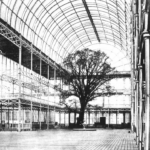 spectators was Winston Churchill, who said, “This is the end of an age.” Unfortunately, as was common for the era, the Crystal Palace was underinsured, and with a potential rebuild cost of at least £2 million, the building was never rebuilt. John Logie Baird, who had used the South Tower and much of the lower level of the building for mechanical television experiments. Much of his work was destroyed in the fire, and Baird suspected the fire was an act of arson to destroy his work on developing television. Nevertheless, the true cause remains unknown.
spectators was Winston Churchill, who said, “This is the end of an age.” Unfortunately, as was common for the era, the Crystal Palace was underinsured, and with a potential rebuild cost of at least £2 million, the building was never rebuilt. John Logie Baird, who had used the South Tower and much of the lower level of the building for mechanical television experiments. Much of his work was destroyed in the fire, and Baird suspected the fire was an act of arson to destroy his work on developing television. Nevertheless, the true cause remains unknown.
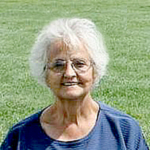 My Aunt Sandy Pattan is the family history guru in the Byer family. As a child, she was sickly, and so spent a lot of time in bed. Being home from school, just Aunt Sandy and her mom, my grandma, Hattie Byer, gave them much time to sit and talk. Remember that while television did exist, it was not common in most homes, and I don’t believe that my grandparents had one when the kids were growing up. There were too many other things that the family needed in the home, like food, for example. Video games were not invented yet, so Aunt Sandy was left with books, and Grandma’s stories to entertain her through the hours over recuperating from this cold or that flu, which seemed to attack her often.
My Aunt Sandy Pattan is the family history guru in the Byer family. As a child, she was sickly, and so spent a lot of time in bed. Being home from school, just Aunt Sandy and her mom, my grandma, Hattie Byer, gave them much time to sit and talk. Remember that while television did exist, it was not common in most homes, and I don’t believe that my grandparents had one when the kids were growing up. There were too many other things that the family needed in the home, like food, for example. Video games were not invented yet, so Aunt Sandy was left with books, and Grandma’s stories to entertain her through the hours over recuperating from this cold or that flu, which seemed to attack her often.
My grandmother grew up in the early 1900s, and by the time Aunt Sandy came along in 1945, Grandma and Grandpa had eight other children. Aunt Sandy would be their last child. While Grandma and Grandpa disagreed on her name, Grandpa honored their decision to let the older kids decide between Sonya and Sandra. He was an honorable man. Grandma told her youngest child about a time when the Indians 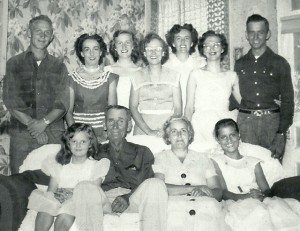 being around, wasn’t all that unusual. Many of her stories might have come from her parents and in-laws tales, but she remembered them all, and passed them on to her daughter, who absorbed them like a sponge. I recall my history classes in school, filled with dry boring date memorization, but when history is told like the story it is, it is amazingly interesting. That’s how Aunt Sandy got to learn history…or shall I say really learn history. When you think about an Indian who spends hours sitting on his horse looking at the wife of a respected friend, because he thought she was beautiful, and still never disrespecting her, because she was the wife of his friend, and you know that the woman was your grandmother, you can begin to relate to history as a story.
being around, wasn’t all that unusual. Many of her stories might have come from her parents and in-laws tales, but she remembered them all, and passed them on to her daughter, who absorbed them like a sponge. I recall my history classes in school, filled with dry boring date memorization, but when history is told like the story it is, it is amazingly interesting. That’s how Aunt Sandy got to learn history…or shall I say really learn history. When you think about an Indian who spends hours sitting on his horse looking at the wife of a respected friend, because he thought she was beautiful, and still never disrespecting her, because she was the wife of his friend, and you know that the woman was your grandmother, you can begin to relate to history as a story.
Aunt Sandy has never lost her love of history, and especially family history. Her parents came from large families and then went on to have a large family, so there was a lot of interesting activities. From the days of gunslingers to the first planes, cars, television, and so many other inventions, her parents had seen it all…or at least heard all about it. The events of history are so amazing, that the current days seem to pale in  comparison. I now that my Aunt Sandy loved hearing all the family stories as they were passed down from mother to daughter, and I’m sure that she thought her family was the most amazing on in history, but the reality is that they were probably just a normal, every day, run of the mill families, living their life in the normal way for the times. It’s just that to the hearer of the story of history, it is so far back in time, and so unusual compared to today’s world, that it seems almost far-fetched, except that it isn’t. It’s the true story of history, and like Aunt Sandy, I will always be grateful to be the one the stories are told to. Today is Aunt Sandy’s birthday. Happy birthday Aunt Sandy!! Have a great day!! We love you!!
comparison. I now that my Aunt Sandy loved hearing all the family stories as they were passed down from mother to daughter, and I’m sure that she thought her family was the most amazing on in history, but the reality is that they were probably just a normal, every day, run of the mill families, living their life in the normal way for the times. It’s just that to the hearer of the story of history, it is so far back in time, and so unusual compared to today’s world, that it seems almost far-fetched, except that it isn’t. It’s the true story of history, and like Aunt Sandy, I will always be grateful to be the one the stories are told to. Today is Aunt Sandy’s birthday. Happy birthday Aunt Sandy!! Have a great day!! We love you!!
 I sometimes think that I am from a different era…one where people didn’t use so many obscenities. In reality, I am from that era, because on June 24, 1957, when I was just a 14 months old, the United States Supreme Court ruled that obscenity is not protected by the First Amendment to the Constitution, which guarantees free speech and freedom of the press. Call me old fashioned, but when I hear someone screaming at their own child, using every obscenity known to man, it makes me cringe. Calling our children such horrible names, can’t possibly be a good way to teach them self esteem. The United States Supreme Court agreed, according to Roth v. United States, a case decided in 1957. Samuel Roth of New York City was convicted of mailing obscene materials. On appeal his conviction was affirmed by the Supreme Court, which held that obscenity was not protected by the First Amendment to the United States Constitution. The court ruled that “material is obscene if, to the average person applying contemporary community standards, the dominant overall theme appeals to prurient interest.”
I sometimes think that I am from a different era…one where people didn’t use so many obscenities. In reality, I am from that era, because on June 24, 1957, when I was just a 14 months old, the United States Supreme Court ruled that obscenity is not protected by the First Amendment to the Constitution, which guarantees free speech and freedom of the press. Call me old fashioned, but when I hear someone screaming at their own child, using every obscenity known to man, it makes me cringe. Calling our children such horrible names, can’t possibly be a good way to teach them self esteem. The United States Supreme Court agreed, according to Roth v. United States, a case decided in 1957. Samuel Roth of New York City was convicted of mailing obscene materials. On appeal his conviction was affirmed by the Supreme Court, which held that obscenity was not protected by the First Amendment to the United States Constitution. The court ruled that “material is obscene if, to the average person applying contemporary community standards, the dominant overall theme appeals to prurient interest.”
These days, we are bombarded with obscenities and profanities…everything from the f-bomb to the names we 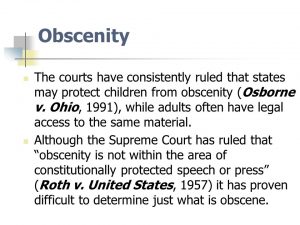 call people we don’t particularly like. Television shows use obscenities on just about every show, and our children are growing up to think that not only is it ok to call people such names, but its ok to be constantly angry…and to let everyone around you know it. It seems to me that as all the obscenities became commonplace, so did anger. And anger breeds hate, which in turn breeds things like road rage, bullying, and even murder.
call people we don’t particularly like. Television shows use obscenities on just about every show, and our children are growing up to think that not only is it ok to call people such names, but its ok to be constantly angry…and to let everyone around you know it. It seems to me that as all the obscenities became commonplace, so did anger. And anger breeds hate, which in turn breeds things like road rage, bullying, and even murder.
Now, that we have the freedom to say the things that we do, another problem has come to light…hate speech. What is hate speech? It never used to be a thing, although it did exist…it just didn’t have a name, per se. So we have somehow come full circle, to a degree. While the Supreme Court used to say that we can’t use obscenities or profanities, and then suddenly we could, now we find ourselves with the necessity to decide if something said is “hate speech” or not, and if it is, then has the right to free speech been denied. Why is one thing different than the other? Believe me, I don’t like either kind of talk…hate or obscene, but if one is “illegal” then shouldn’t the other also be “illegal.” Or, should we have any say at all? It is a vicious circle to be sure. I guess that in reality, it is a moral issue. We have slipped so far from the moral values of our ancestors that our  world almost doesn’t even resemble that of the era I was raised in, and certainly bears no resemblance to the era of our ancestors. While I can’t say exactly how to solve this dilemma, I think that maybe the best solution lies within each of us. Maybe we need to walk away from the situations that make us angry. Maybe we need to be more careful of the speech and behaviors that we show to our children. Maybe we need to teach our children that other people have a right to their opinion too, and it is not up to us to be their verbal police. Maybe we need to take offense less, and show compassion more. No matter what the ultimate solution is, there is no doubt in my mind that it begins in the human heart.
world almost doesn’t even resemble that of the era I was raised in, and certainly bears no resemblance to the era of our ancestors. While I can’t say exactly how to solve this dilemma, I think that maybe the best solution lies within each of us. Maybe we need to walk away from the situations that make us angry. Maybe we need to be more careful of the speech and behaviors that we show to our children. Maybe we need to teach our children that other people have a right to their opinion too, and it is not up to us to be their verbal police. Maybe we need to take offense less, and show compassion more. No matter what the ultimate solution is, there is no doubt in my mind that it begins in the human heart.
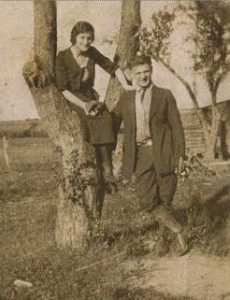 Every family struggles to find ways to do things together…not to mention the time to do so. Kids have their own activities, such as sports, dance, and other club and school activities. Parents work, kids have school, and then there are things that need to be done around the house. By the time dinner is cooked and eaten, and the table cleared, who feels like doing more activities. Plus, there is homework to be done. It seems like there isn’t time for anything more than a television show before bed.
Every family struggles to find ways to do things together…not to mention the time to do so. Kids have their own activities, such as sports, dance, and other club and school activities. Parents work, kids have school, and then there are things that need to be done around the house. By the time dinner is cooked and eaten, and the table cleared, who feels like doing more activities. Plus, there is homework to be done. It seems like there isn’t time for anything more than a television show before bed.
Most of us think this is just something that has come with modern day families, where they barely have time to eat dinner together…if that. In reality, it is a problem that has been around for a lot longer. Kids just naturally grow up and become more independent, and parents get busier too. Something had to be done, so in 1939, so Charles Steinlauf stepped up. He didn’t build his bicycle for a record, because there wasn’t such a thing then. The Guinness book of records didn’t begin until the early 1950’s. Nevertheless, he was some “inventor” to use the word lightly. His was an interesting bicycle, and apparently it held something for everyone…I guess. As odd as it was, the bicycle really  did work. The top rider, namely Charles steered the bicycle with an automobile steering wheel. His wife sat below operating a sewing machine. Their son was in back and their daughter sat on handle bars in front. When they stopped, the legs of the sewing machine kept the two story Goofybike, as it was called, from falling over. I don’t know any other way to safely stop it.
did work. The top rider, namely Charles steered the bicycle with an automobile steering wheel. His wife sat below operating a sewing machine. Their son was in back and their daughter sat on handle bars in front. When they stopped, the legs of the sewing machine kept the two story Goofybike, as it was called, from falling over. I don’t know any other way to safely stop it.
It might have been one of the strangest inventions in history, but, it did get his family out and about in Chicago, Illinois, and I’m certain it also brought them quite a bit of notoriety. I’m sure that there were lots of people who that of Steinlauf as that “weird inventor,” and to be honest, it looks like he just hooked a bunch of odds and ends together. It was, however, a little more technical than that, after all, just hooking a bunch of things together, does not a bicycle make. It has to be able to be ridden in order to really qualify as a bicycle, weird or not. And the Goofybike could be and was ridden by the whole Steinlauf family.
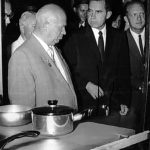 The debate between capitalism and communism is not new, and in fact has been going on for a long time. Possibly one of the strangest debates, known as the “kitchen debate” was between Vice President Nixon and Soviet leader Nikita Khrushchev. The debate was heated at times, but what was strangest about the debate was the fact that it took place in the middle of a model kitchen set up for an exhibit. Why they would have such a discussion in a model kitchen at a national exhibit is the really beyond me, but that is where it took place.
The debate between capitalism and communism is not new, and in fact has been going on for a long time. Possibly one of the strangest debates, known as the “kitchen debate” was between Vice President Nixon and Soviet leader Nikita Khrushchev. The debate was heated at times, but what was strangest about the debate was the fact that it took place in the middle of a model kitchen set up for an exhibit. Why they would have such a discussion in a model kitchen at a national exhibit is the really beyond me, but that is where it took place.
The so-called “kitchen debate” became one of the most famous episodes of the Cold War, and many think it might have really led to fighting words, had it not been for the two men controlling their tempers in the end. The meeting was set up in late 1958. In an effort to draw the two nations closer together, the Soviet Union and the United States agreed to set up national exhibitions in each other’s nation as part of their new emphasis on cultural exchanges. The Soviet exhibition opened in New York City in June 1959, and the United States exhibition opened in Sokolniki Park in Moscow in July. On July 24, before the Moscow exhibit was officially opened to the public, Vice President Nixon served as a host for a visit by Soviet leader Khrushchev. As Nixon led Khrushchev through the American exhibition, the Soviet leader’s famous temper began to flare. When Nixon demonstrated some new American color television sets, Khrushchev launched into an attack on the so-called “Captive Nations Resolution” passed by the United Stares Congress just days before. The resolution condemned the Soviet control of the “captive” peoples of Eastern Europe and asked all Americans to pray for their deliverance. I don’t suppose that resolution set well with Khrushchev, and coming right before the exhibition probably set the whole debate in motion.
After denouncing the resolution, Khrushchev then sneered at the United States technology on display, saying that the Soviet Union would have the same sort of gadgets and appliances within a few years. Nixon, was not a man to back down from a debate, so he cane right back and goaded Khrushchev by stating that the Russian leader should “not be afraid of ideas. After all, you don’t know everything.” The Soviet leader snapped at Nixon, “You don’t know anything about communism–except fear of it.” With a small army of reporters and photographers following them, Nixon and Khrushchev continued their argument in the kitchen of a model home built in the exhibition. With their voices rising and fingers pointing, the two men went at each other. I’m sure it was quite a show. Nixon suggested that Khrushchev’s constant threats of using nuclear missiles could lead to war, and he chided the Soviet for constantly interrupting him while he was speaking. Taking these words as a threat, Khrushchev warned of “very bad consequences.” Perhaps feeling that the exchange had gone too far, the Soviet leader then noted that he simply wanted “peace with all other nations, especially America.” Nixon, 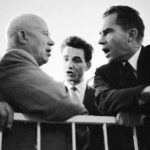 feeling slightly embarrassed said that he had probably not “been a very good host.” The debate, so quickly inflamed, fizzled in much the same way…at least between the two men…not so much the media.
feeling slightly embarrassed said that he had probably not “been a very good host.” The debate, so quickly inflamed, fizzled in much the same way…at least between the two men…not so much the media.
The “kitchen debate” was front-page news in the United States the next day. For a few moments, in the confines of a “modern” kitchen, the diplomatic gloves had come off and America and the Soviet Union had verbally jousted over which system was superior…communism or capitalism. As with so many Cold War battles, however, there was no clear winner…except perhaps for the United States media, which had a field day with the dramatic encounter. It was the sensationalism that the news media craves.

 With yesterday’s eclipse, came a massive amount of videos and photos documenting the event. Before it was even over, people all over the world were able to view the event. NASA filmed it and posted it on their website…including the moments when the International Space Station flew in front of it!! It was an awesome way for people, who were unable to get to the path of totality, to view the event. While we give little thought to such abilities today, just a few years back, they would have seemed impossible, or at the very least, they would have shocked us. That’s because we have things like television, internet, cell phones, and digital cameras…but they didn’t then. The television was looked upon as a fad that would never take hold. People simply wouldn’t spend the money on one. How very wrong they were.
With yesterday’s eclipse, came a massive amount of videos and photos documenting the event. Before it was even over, people all over the world were able to view the event. NASA filmed it and posted it on their website…including the moments when the International Space Station flew in front of it!! It was an awesome way for people, who were unable to get to the path of totality, to view the event. While we give little thought to such abilities today, just a few years back, they would have seemed impossible, or at the very least, they would have shocked us. That’s because we have things like television, internet, cell phones, and digital cameras…but they didn’t then. The television was looked upon as a fad that would never take hold. People simply wouldn’t spend the money on one. How very wrong they were.
Lets travel back in time to when television first came out. All the people had were radios to hear about the things that were going on…or the newspapers. There was simply no way to show the people what an eclipse looked like, unless they saw it for themselves. No way to warn them of the serious dangers of looking at it. Things like that were by trial and error. Not only that, but they really couldn’t predict and eclipse. And space travel…what was that? Nevertheless, the dawning of a new age was upon them. The days of being in the dark when it came to world events was about to end. And television would bring with it so much more than just the news. Still, the television, when it first made its appearance on the planet, cost a lot of money. Far to much money for the average family to spend on the new fangled contraption, so few people had one. That didn’t stop the kids, and even adults, from watching it in the store windows, they just didn’t get to watch it very often.
As time went by, the prices of televisions came down, and people realized that this wasn’t just a passing fad. 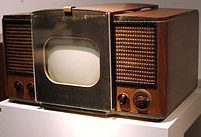
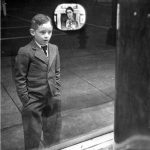 These days, nearly every household in the United States, if not the world has one, and those who don’t, have likely chosen to walk away from the television. And we aren’t even tied to our homes to watch television now. We can watch it from our computers or even our cell phones. Wow!! How far we have come. News is only new for a few seconds, and by the time stories come out in the paper, they have already been read on the internet. Before long, I’m sure the newspaper will become obsolete…if it hasn’t already.
These days, nearly every household in the United States, if not the world has one, and those who don’t, have likely chosen to walk away from the television. And we aren’t even tied to our homes to watch television now. We can watch it from our computers or even our cell phones. Wow!! How far we have come. News is only new for a few seconds, and by the time stories come out in the paper, they have already been read on the internet. Before long, I’m sure the newspaper will become obsolete…if it hasn’t already.
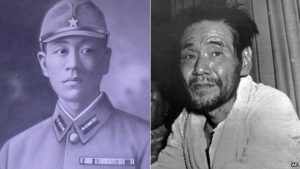 These days, lots of people have considered living off the grid. It’s almost the latest thing. Most of them really just want to do away with the bills that go along with being on the grid…water, electric, gas etc, but some of them are really wanting to lead a disconnected life. They want to shut off the phone, television, and computer, and just enjoy nature. To me, that sounds like fun for about a day…but then I am more a child of the age of technology than even my kids and grandkids are sometimes, and that’s saying something, because they are technological people, in one way or another. I have to wonder how the off the grid people would feel about it, if they had been Shoichi Yokoi.
These days, lots of people have considered living off the grid. It’s almost the latest thing. Most of them really just want to do away with the bills that go along with being on the grid…water, electric, gas etc, but some of them are really wanting to lead a disconnected life. They want to shut off the phone, television, and computer, and just enjoy nature. To me, that sounds like fun for about a day…but then I am more a child of the age of technology than even my kids and grandkids are sometimes, and that’s saying something, because they are technological people, in one way or another. I have to wonder how the off the grid people would feel about it, if they had been Shoichi Yokoi.
At this point, I’m sure that you are wondering who Shoichi Yokoi is and what was going on with him that made him such an off the grid type, so I’ll tell you. Shoichi Yokoi was a Japanese sergeant, from World War II. Shoichi was stationed on Guam, which had become a United States territory in 1898. In 1941, during World War II, the Japanese attacked Guam and captured it. The 200 square mile island, located in the western Pacific Ocean remained in Japanese Hands for three years. Then, the United States attacked and retook the island. As the Japanese forces retreated and surrendered, Yokoi made the decision not to surrender, and he went into hiding in the Jungle. He dug a tunnel, that would be his home while he was in hiding. Yokoi, who had been a tailor’s apprentice before being drafted in 1941, made clothing from the fibers of wild hibiscus plants and survived on a diet of coconuts, breadfruit, papayas, snails, eels and rats. “We Japanese soldiers were told to prefer death to the disgrace of getting captured alive.” While living in the jungle, Yokoi carved survival tools and for the next three decades waited for the return of the Japanese and his next orders…three decades!!!
Somehow, this man was so far off the grid that he had no idea what was going on in the world for almost three decades, and he assumed that World War II was still going on. He spoke to no one. He hid from anyone who might have come near him. Then, he slipped up…a good thing, as it would turn out to be. After 28 years of hiding in the jungles of Guam, local farmers discovered Shoichi Yokoi hiding in the jungle. I’m sure he was totally shocked to find out that he was the only one in the world still fighting World War II!! After he was discovered on January 24, 1972, he was finally discharged and sent home to Japan, where he was hailed as a national hero. I guess Shoichi must have grown to love Guam, because when he married, he and his new bride 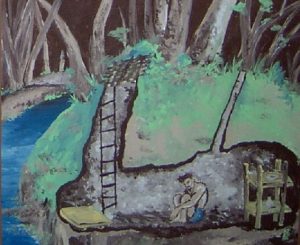
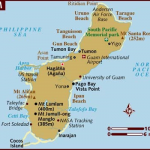 returned to Guam for their honeymoon. Shoichi went on to live a long life, and passed away on September 22, 1997 at the age of 82. The people of Guam and the governments of the United States and Japan must have though that his story was so amazing that his handcrafted survival tools and threadbare uniform are now on display in the Guam Museum in Agana. Shoichi might have been an enemy of the United States, but I can’t help but think that he must have been a very faithful soldier, to have held out that long.
returned to Guam for their honeymoon. Shoichi went on to live a long life, and passed away on September 22, 1997 at the age of 82. The people of Guam and the governments of the United States and Japan must have though that his story was so amazing that his handcrafted survival tools and threadbare uniform are now on display in the Guam Museum in Agana. Shoichi might have been an enemy of the United States, but I can’t help but think that he must have been a very faithful soldier, to have held out that long.
 Few birthdays mark such a big change in one’s life as this one will for my husband, Bob Schulenberg. Bob had planned to retire in January of 2017, but with the offer of a severance package through the City of Casper, where he has worked since May of 1989, due to the economic downturn, Bob retired on July 1st. It was like icing on the cake, and we couldn’t turn it down. That means that since he was 17 years old, this is the first birthday Bob will spend without a job. That is such a foreign thought to him…and to me. Bob is a hard working man, who has a lot of trouble sitting still…probably for working so hard for so many years, so I doubt he will do much of that. Besides, there are people who have been waiting for him to retire, so he can work on their cars. Hmmm, does that sound like much will change with him? I don’t really think so. In fact, I think that the only thing that will be likely to change, is the stress of an 8:00 to 4:30 job…with a boss. I think that the “B” word is one word Bob is totally ready to
Few birthdays mark such a big change in one’s life as this one will for my husband, Bob Schulenberg. Bob had planned to retire in January of 2017, but with the offer of a severance package through the City of Casper, where he has worked since May of 1989, due to the economic downturn, Bob retired on July 1st. It was like icing on the cake, and we couldn’t turn it down. That means that since he was 17 years old, this is the first birthday Bob will spend without a job. That is such a foreign thought to him…and to me. Bob is a hard working man, who has a lot of trouble sitting still…probably for working so hard for so many years, so I doubt he will do much of that. Besides, there are people who have been waiting for him to retire, so he can work on their cars. Hmmm, does that sound like much will change with him? I don’t really think so. In fact, I think that the only thing that will be likely to change, is the stress of an 8:00 to 4:30 job…with a boss. I think that the “B” word is one word Bob is totally ready to  remove from his vocabulary…and I’m ready for him to be able to remove that word too. One of the things we are looking forward to is more free time to walk and hike, because we both like that. Of course, since I am still working, most of that will be around Casper for now.
remove from his vocabulary…and I’m ready for him to be able to remove that word too. One of the things we are looking forward to is more free time to walk and hike, because we both like that. Of course, since I am still working, most of that will be around Casper for now.
Bob has a few other plans in mind to occupy his time, like finally getting his garage organized and putting in a storage shed to house the things that really won’t fit in the garage now that it will be a shop, and not just a place to park the cars most of the time. That’s all fine with me, as long as he leaves me an open stall to park my car in, because after all, my car lives there and the cars he is working on don’t. I can see him hanging out at the parts house, talking to the guys, because most of the time he doesn’t have much time for visiting when he goes in there. And of course, there will be the morning breakfasts with the other retirees…you know, that exclusive club that can go have breakfast at 9:00 if they want to, because after all, they don’t have to got to  work. I guess you can see why I am going to have to keep him walking and hiking…yes, it’s so he doesn’t get fat from all that sitting around.
work. I guess you can see why I am going to have to keep him walking and hiking…yes, it’s so he doesn’t get fat from all that sitting around.
Oh, I tease Bob about sitting around doing nothing, but that simply isn’t Bob’s style. He will probably watch a little more television, but my guess is that it won’t be very much or very often. He has better things to do than to sit around wasting away. For Bob, retirement means the freedom to get out and do things, without having to stop and go to work, and I am very happy for him. Today is Bob’s birthday. Happy birthday Honey!! Have a great day!! We love you, and we are all very happy for you!!
 Television was invented by a 21 year old man named Philo Taylor Farnsworth, and first successfully demonstrated in San Francisco on Sept. 7, 1927. It’s odd to think that my dad, Allen Spencer lived both before the invention of television and after it. I suppose that isn’t so very odd, because I have lived before and after the cell phone, and that doesn’t seem strange to me at all, so I suppose it didn’t seem strange to my dad either. Then, on March 25, 1954…just a month and a half before my sister, Cheryl Masterson was born, RCA announced that it had begun producing the first color television sets in its Bloomington, Indiana plant.
Television was invented by a 21 year old man named Philo Taylor Farnsworth, and first successfully demonstrated in San Francisco on Sept. 7, 1927. It’s odd to think that my dad, Allen Spencer lived both before the invention of television and after it. I suppose that isn’t so very odd, because I have lived before and after the cell phone, and that doesn’t seem strange to me at all, so I suppose it didn’t seem strange to my dad either. Then, on March 25, 1954…just a month and a half before my sister, Cheryl Masterson was born, RCA announced that it had begun producing the first color television sets in its Bloomington, Indiana plant.
I’m sure it was a while before most homes made the move to color televisions, and 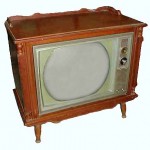 then, of course, there was the wait for shows to be filmed in color. I know that I remember watching a black and white television, and I’m sure most people my age can say the same. The current generation would have no idea what it was like to watch a black and white television, or an early color television. They have seen everything from HD television, to cell phones with television, as well as tablets. The old televisions would seem completely antiquated…and in reality, my generation would look at them that way too. It amazes me just how quickly we get used to new technology, and it amazes me just how long people will hold on to the old stuff before making the transition too. I suppose some think that if it isn’t broken, there is no reason to replace it just yet, but others simply wait until the see how well this new fangled gadget is going to work, or if it’s around very long. So many fads come and go, and are never
then, of course, there was the wait for shows to be filmed in color. I know that I remember watching a black and white television, and I’m sure most people my age can say the same. The current generation would have no idea what it was like to watch a black and white television, or an early color television. They have seen everything from HD television, to cell phones with television, as well as tablets. The old televisions would seem completely antiquated…and in reality, my generation would look at them that way too. It amazes me just how quickly we get used to new technology, and it amazes me just how long people will hold on to the old stuff before making the transition too. I suppose some think that if it isn’t broken, there is no reason to replace it just yet, but others simply wait until the see how well this new fangled gadget is going to work, or if it’s around very long. So many fads come and go, and are never 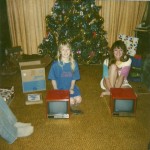 heard from again. Others, like televisions, cell phones, and computers are here to stay.
heard from again. Others, like televisions, cell phones, and computers are here to stay.
Television sets have gone from average size to ultra big, to ultra small, and everything in between. Of course, as we all know, the television has continues to improve in color and clarity too. Sometimes I think the color is almost better than real life…if that’s possible. With new abilities in editing, color can be enhanced to amazing levels. I’m sure that there are some people who would think enhanced color is not a good thing, and sometimes…if it seems completely outlandish, I would have to agree, but when it comes to watching television, I think they do a pretty good job, and I can’t imagine going back to a black and white television.
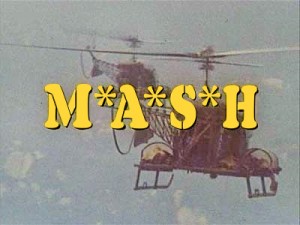 For years many Americans, myself included, were drawn into the Korean War, or at least one aspect of it, in the form of M*A*S*H, a popular television show about the way a Mobile Army Surgical Hospital was run…sort of. The show took on more than just the hospital side, by including a comical side that portrayed the antics of Benjamin Franklin Pierce, aka Hawkeye, and his best friend and co-conspirator, BJ Honeycutt. I can’t say just how true to life the show was, but we all cried right along with the doctors and nurses when they lost a patient, and cheered when they saved one.
For years many Americans, myself included, were drawn into the Korean War, or at least one aspect of it, in the form of M*A*S*H, a popular television show about the way a Mobile Army Surgical Hospital was run…sort of. The show took on more than just the hospital side, by including a comical side that portrayed the antics of Benjamin Franklin Pierce, aka Hawkeye, and his best friend and co-conspirator, BJ Honeycutt. I can’t say just how true to life the show was, but we all cried right along with the doctors and nurses when they lost a patient, and cheered when they saved one.
In reality, the MASH units were a vital part of the war effort, and the saving of  the lives of many soldiers. These were amazing surgeons who learned techniques that cut corners, making surgeries faster and more efficient, bringing lifesaving changes to medicine in the process. The MASH units were originally established in August of 1945, and then were deployed during the Korean War and later conflicts. The Army deactivated the last MASH unit on February 16, 2006, which I did not know, but I’m sure most of my military friends probably did. The MASH units were replaced by the CSH or Combat Support Hospital. I’m sure the CSH units are amazing units too, and maybe someday they will have as big a place in history as the MASH units did, but unless they do a television show that is as popular as the M*A*S*H show was, I don’t think their place in history will be as well known to the American people as the MASH units were. I’m sure that with all the improvements, the CHS units are probably better and more up to date than the MASH units were, but in the hearts of the M*A*S*H fans, the CHS units have big shoes to fill.
the lives of many soldiers. These were amazing surgeons who learned techniques that cut corners, making surgeries faster and more efficient, bringing lifesaving changes to medicine in the process. The MASH units were originally established in August of 1945, and then were deployed during the Korean War and later conflicts. The Army deactivated the last MASH unit on February 16, 2006, which I did not know, but I’m sure most of my military friends probably did. The MASH units were replaced by the CSH or Combat Support Hospital. I’m sure the CSH units are amazing units too, and maybe someday they will have as big a place in history as the MASH units did, but unless they do a television show that is as popular as the M*A*S*H show was, I don’t think their place in history will be as well known to the American people as the MASH units were. I’m sure that with all the improvements, the CHS units are probably better and more up to date than the MASH units were, but in the hearts of the M*A*S*H fans, the CHS units have big shoes to fill.
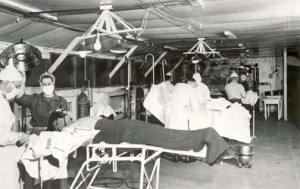 Many an evening has found Bob and I watching a M*A*S*H marathon. And during the original years, we watched it every night that it was on. We simply liked the show. I have to wonder if any other war has been watched as much as the Korean War…even though people didn’t necessarily realize that they were watching a war, or at least a part of it. While we may not have really learned a lot about the Korean War from this source, we did learn something about one part of the war…a vital part in all reality. Now that M*A*S*H is on again as re-runs, we often fine ourselves watching it again…even though we know how it will end. It is just one of those timeless shows. You just really never get tired of them…even the re-runs.
Many an evening has found Bob and I watching a M*A*S*H marathon. And during the original years, we watched it every night that it was on. We simply liked the show. I have to wonder if any other war has been watched as much as the Korean War…even though people didn’t necessarily realize that they were watching a war, or at least a part of it. While we may not have really learned a lot about the Korean War from this source, we did learn something about one part of the war…a vital part in all reality. Now that M*A*S*H is on again as re-runs, we often fine ourselves watching it again…even though we know how it will end. It is just one of those timeless shows. You just really never get tired of them…even the re-runs.

